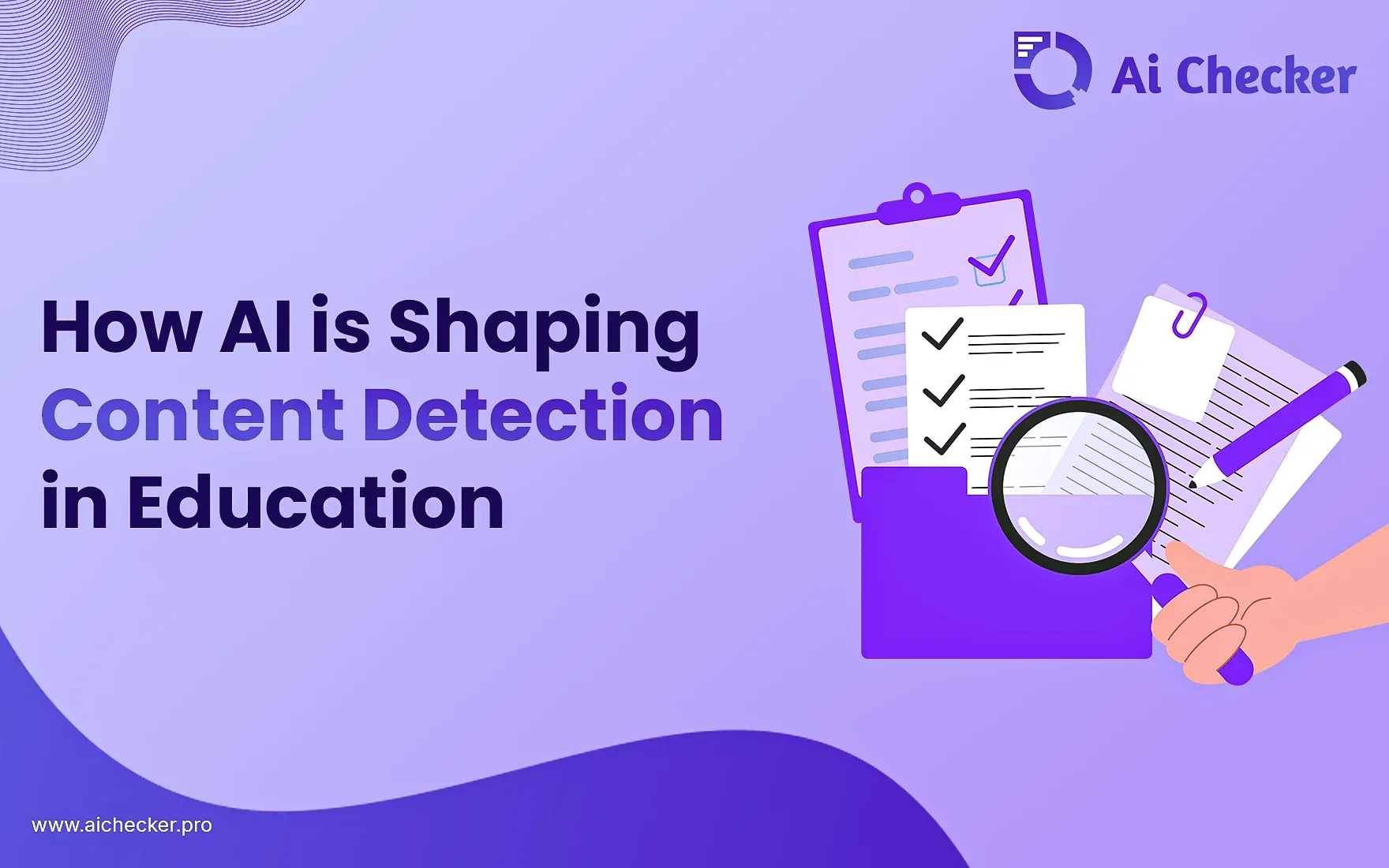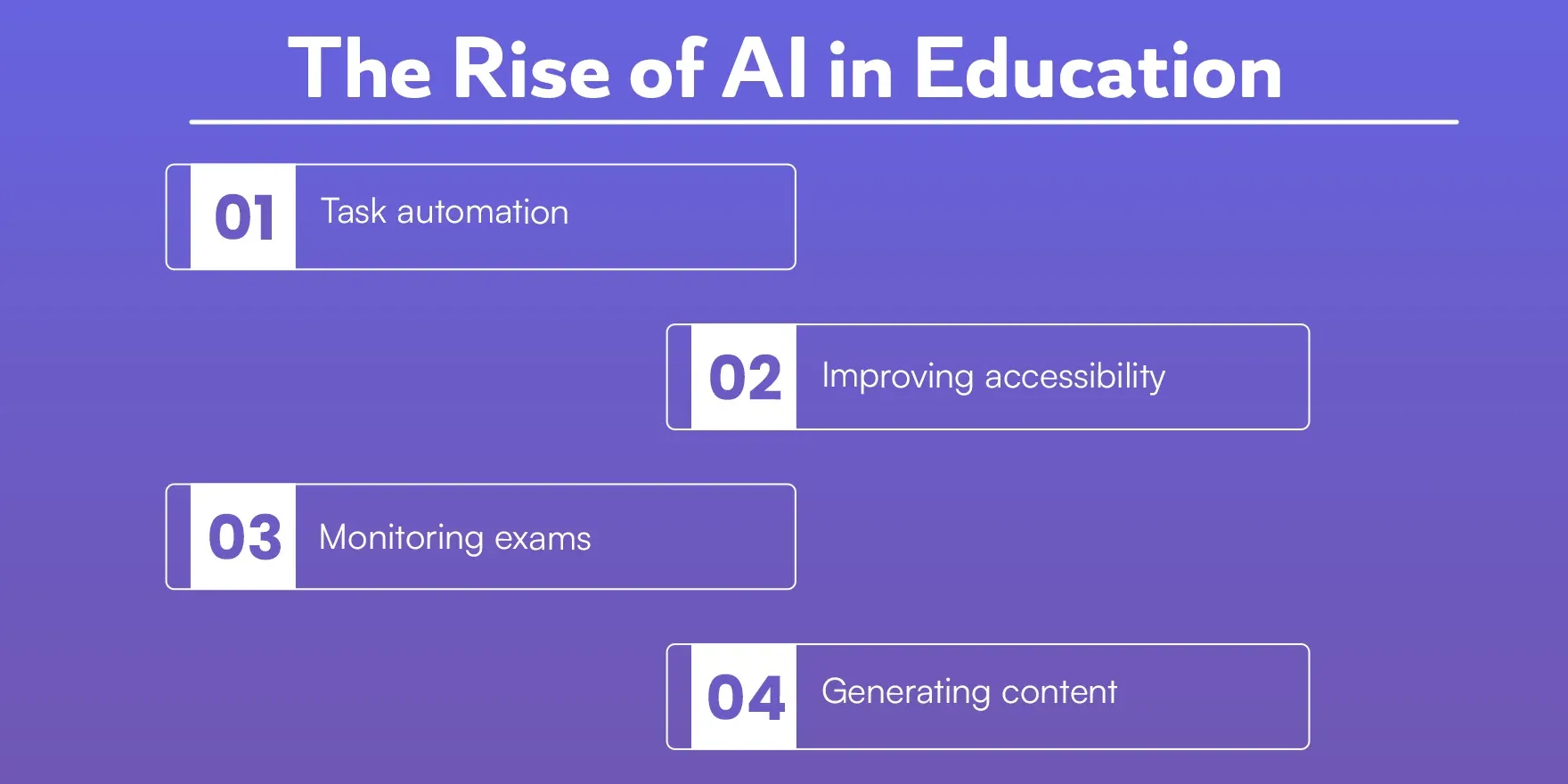Sign In
Welcome to AI Checker Sign in to continue your exploration of our platform with all its exciting features.
Forgot Password?
Don’t have an account ? Sign Up
Forgot Password
We'll Send You An Email To Reset Your Password.
Back to Login
Sign Up
Embrace the Future with AI Checker Sign up now and let's rewrite the possibilities together.
Already have an account? Sign In
Enter OTP
We'll send you an email to reset your password.
Back to Login
Enter OTP
We'll send you an OTP on your registered email address.
Back to Login
Confirm Password
Please enter your new password.
How AI is Shaping Content Detection in Education
 Megan Harris
Megan Harris
TABLE OF CONTENTS
Quick Summary
What Is AI Content Detection?
Understanding AI Content Detection
Why Do We Need AI Content Detection in Education?
The Rise of AI in Education
The Risks and Limitations of AI in Education
How AI Content Detection in Education Can Help Address the Risks
The Future of AI Content Detection in Education
Conclusion
FAQ's
Education has always leaned on new ideas to broaden horizons. From chalkboards to online platforms, there's been no shortage of innovation in the classroom. Now, artificial intelligence is making waves in ways we never thought possible. Some people focus on AI’s ability to grade papers or answer questions. Others note how it can speed up administrative tasks. Yet, another piece of the puzzle deserves our attention: content detection. It’s no longer enough to rely on guesswork or gut feelings to spot plagiarism or suspicious text. The world is moving toward systems that can detect the subtle marks of machine-generated writing. This blog sheds light on how AI is shaping content detection in education. It's a look at why it matters, how it works, and what lies ahead. Get ready for a plain-talk rundown filled with witty thoughts and short sentences. Let’s get started.
Quick Summary
AI content detection is about spotting and assessing text generated by AI systems. It helps educators maintain academic honesty and guard against plagiarism. By flagging potential issues, it keeps human creativity in focus. At the same time, it can highlight broader uses of AI that help with classroom tasks. This summary is your cheat sheet: know what AI content detection is, why it matters, and how it shapes modern teaching practices.
What Is AI Content Detection?
AI content detection refers to software and methods designed to spot patterns that suggest machine-generated text. Picture a specialized set of eyes that can read a sentence and note if there's something off about its structure or vocabulary. This detection process relies on advanced models that sift through large data sets and compare them to known examples of AI output. The goal is not to discourage the use of AI in education but to ensure that students and educators remain aware of what’s genuine. When done right, AI content detection can keep academic standards from slipping. Think of it as a safety net that preserves honest efforts. It helps schools stay on track with proper acknowledgment of sources.
Understanding AI Content Detection
Understanding AI content detection starts by knowing that it works behind the scenes. It compares words, sentence structures, and certain patterns to an ever-growing database. Whenever it spots something that looks machine-made, it flags it. This is not just about catching cheaters or cutting corners. It’s also a way to gauge how AI-generated text stands out from human writing. At times, the system can mislabel text if the writer uses uncommon vocabulary or a certain style. That’s why it’s important for schools and universities to recognize that content detection is a tool, not an infallible judge. There’s room for human oversight, especially when the system shows borderline results. We should see it as a safeguard, not an ultimate authority.
Why Do We Need AI Content Detection in Education?
Educational integrity is at stake when technology moves faster than classroom rules. AI can help students with research or study habits, but it can also blur the line between original work and machine-generated output. That’s where AI content detection comes in. It keeps watch, offering a system of checks and balances that can reinforce trust in the grading process. Without it, teachers might miss hidden AI involvement or pass up the chance to correct academic misconduct early. Students, too, gain clarity because they know that software is scanning their work for authenticity. This fosters an environment where genuine effort is respected, and shortcuts don’t go unnoticed. With AI content detection, schools can stay ahead of emerging challenges. That’s reason enough.
The Rise of AI in Education

1. Task automation
AI has changed how schools manage routine tasks. Grading, attendance tracking, and data management often happen with minimal human input. This frees teachers from paperwork so they can focus on teaching. At the same time, it raises the question of reliability. A small glitch can lead to big errors in records.
2. Improving accessibility
AI tools can make learning more inclusive. They can read aloud text for students with visual challenges, translate materials for non-native speakers, or adjust content for different skill levels. This is a step toward bridging gaps. But in doing so, schools should also ensure that these tools don’t overshadow real teaching.
3. Monitoring exams
Exam supervision has always been a thorny issue. AI-driven proctoring tools now watch students through webcams and track keystrokes. On the one hand, it deters cheating. On the other, it sparks debates about privacy and data misuse. Institutions must weigh these factors carefully. Technology can help, but it should not invade personal space.
4. Generating content
Students and educators often use AI to draft essays or solve problems. It can offer a quick fix, but it might reduce the incentive to learn core concepts. Also, the text generated may contain errors or questionable sources. Educators need balanced strategies that promote learning while acknowledging the role of AI tools.
The Risks and Limitations of AI in Education
1. Plagiarism and cheating
AI text generators have made academic dishonesty simpler. A student might produce a paper with minimal effort. That cheats honest learners out of fair recognition. AI content detection tries to counter this, but it’s not foolproof. Some advanced tools slip under the radar. This remains a balancing act: making the most of AI’s benefits without granting free passes to those looking for shortcuts. Vigilance is key.
2. Bias
AI systems learn from data that might carry hidden biases. When these biases slip into educational tools, they can favor certain groups while overlooking others. This can widen achievement gaps and undermine fairness. If a student’s dialect or phrasing doesn’t match the system’s norms, their writing might be flagged or misunderstood. Bias is not easy to fix. Schools must keep a eye to ensure fair outcomes.
3. Potential for errors
Even the best AI can stumble. Complex questions or nuanced writing may trip it up, causing false positives or misses. Students might be wrongly accused of cheating, or actual misconduct could go unchecked. Such missteps can damage trust in the system. To address this, audits and updates are necessary. Human judgment should always remain a part of the process, keeping the technology aligned with real-world expectations.
How AI Content Detection in Education Can Help Address the Risks
AI content detection is not a cure-all, but it’s a strong line of defence. By scanning assignments it flags suspicious text and puts teachers on alert. This means less chance of plagiarized or AI-generated work slipping through. It also helps guard against bias by highlighting text that doesn’t fit expected patterns. Educators can then review the flagged segments and decide if there’s an issue. When done properly, this fosters an environment of accountability. Errors still happen, but the presence of detection tools reduces them. And because teachers can set custom parameters, they have greater control over what is flagged. That personal touch means better accuracy, making AI content detection a valuable asset rather than a blunt instrument. Everyone wins here.
The Future of AI Content Detection in Education
The future looks busy. As AI models get more complex, content detection software must also step up. We might see systems that spot not just the text but also the style and thought process behind it. It’s possible that student AI check features will become standard in learning platforms. Perhaps the next wave will be real-time alerts as students type. However, these advancements will come with privacy debates and the possibility of overreliance on automation. Educators need to remain part of the loop, interpreting results with their professional judgment. In time, we could see a more collaborative approach between AI and human oversight, ensuring that academic work retains its personal touch. It’s an evolving landscape, full of potential.
Conclusion
This field is changing fast. Teachers and students all have a stake. AI Checker Pro is one good option for a student AI check. Expect better safeguards on the horizon soon.
FAQ's
1. How do educators check for AI in class work?
Many use an academic AI detector. These tools quickly scan text to spot machine-generated patterns.
2. What is the effectiveness of AI detectors in education?
They spot unusual text patterns. But they can miss advanced AI or flag unique human writing.
3. Can students do a student AI check on their papers?
Yes, online tools offer scans, letting learners verify if their text triggers AI detection alarms.
4. Is an academic AI detector enough to catch all misuse?
Not always. Human review is vital. Software aids but can’t fully judge context or intention.
5. Can an AI detector spot AI human text in research?
Answer: Usually, yes. But new AI might fool it sometimes. Regular updates keep detectors pretty competitive.

Megan Harris
Content writer at @Aichecker
I am a content writer at AI Checker Pro, where I craft engaging, SEO-optimized content to enhance brand visibility and educate users about our AI-driven solutions. My role involves creating clear, impactful messaging across digital platforms to drive engagement and support company growth.


